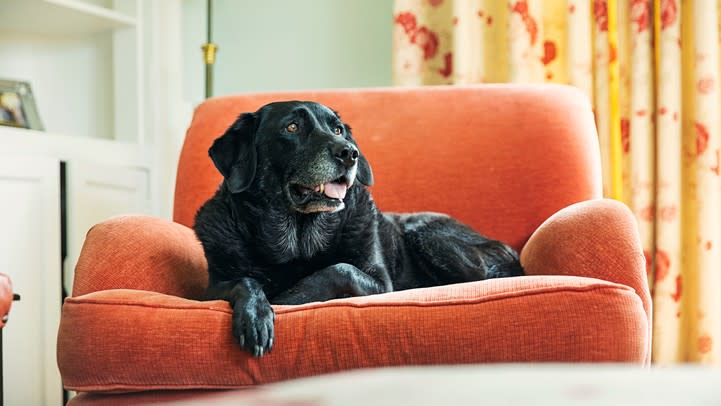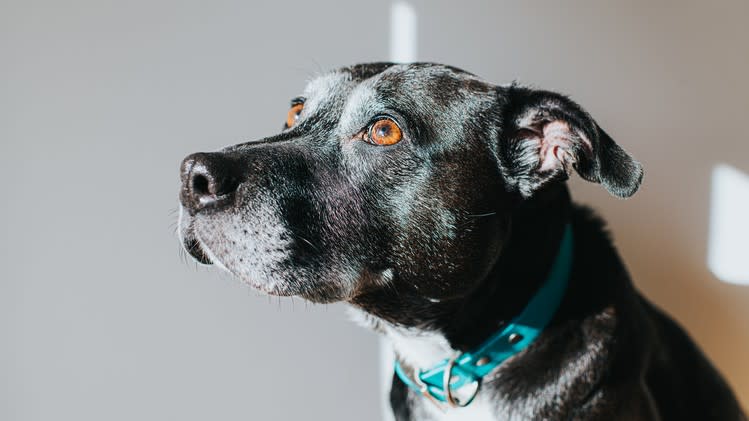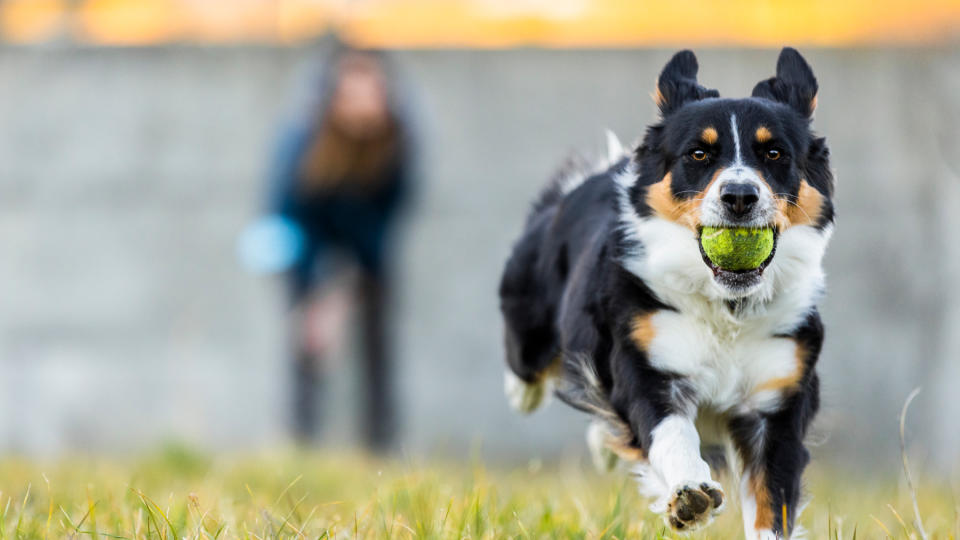Aging in dogs: Signs your dog is getting old and how to help them

Time makes fools of us all, and dogs are no exception, and just like with humans, there are signs your dog is getting old. As your dog moves into their senior years, there can be a range of changes, both physical and mental, that you should look out for.
We can’t cure aging, we can adjust our dog’s lifestyle to make them more comfortable and happy as they gracefully age into silver hound status. Switching your dog to the best dog food for senior dogs will help make sure they’re getting the right nutrients, while the best orthopedic dog beds will help make dogs with creaky joints more comfortable.
While all dogs get old, not all dogs and dog breeds age at the same rate. Large dog breeds tend to age quicker than smaller breeds. A Great Dane of six-years old would be classified as a senior, but a toy breed like a Chihuahua wouldn’t reach senior status until they’re around ten-years old. And even then, not all dogs age the same way — some canines might develop symptoms on this list, but others will stay perfectly healthy long into their golden years.
We spoke to vet Dr. Joanna Woodnutt about the eight main symptoms that you should be looking out for when your dog is getting old, along with advice on how to alleviate or treat them when they come up.
1. They're getting stiff

You might have noticed your dog being a bit stiff in the mornings, or after getting up from rest and thought “bless him, he’s getting old!”
However, according to a study published in the Veterinary Clinics of North America: Small Animal Practice journal, stiffness isn’t related to old age itself, but is actually a sign that they could be suffering from arthritis, a painful joint condition that affects 80% of dogs over the age of 8.
Whilst many dog owners think that stiffness is a normal part of aging, it’s better for them to see a vet to get some pain relief and other suggestions for easing arthritis pain. For example, buying them the best orthopedic dog bed, can usually soothe these signs your dog is getting old.
2. Going deaf
One of the big signs your dog is getting old is a loss of hearing to some extent, although it can sometimes be difficult to tell if they’re genuinely deaf or just have selective hearing in their old age – they seem to come running to the biscuit tin all the same!
Unless it’s accompanied by ear pain, a head tilt, or swellings of the skull, deafness isn’t necessarily anything to worry about. However, you might decide to stop letting your dog off the lead, or teach them some sign language commands.
3. Cloudy eyes and sight loss
Your dog’s eyes can cloud over in a condition called nuclear sclerosis – one of the more common signs your dog is getting old. Whilst this might look a bit like cataracts, due to the blue-white shine, it’s considered normal for older dogs. You may also notice your dog appearing to lose their sight, although this will be very gradual and most dogs with nuclear sclerosis will be able to see well for a long time.
Nuclear sclerosis is nothing to worry about, and vets don’t tend to recommend any treatment, as it’s a normal part of aging.
4. Dental disease and smelly breath
Dental disease and dog gum diseases can affect dogs of any age, but it gets more common and more serious as your dog ages. Smelly breath is often the first sign that pet parents spot, but if you get into the habit of examining your dog’s teeth regularly you’ll also notice green-grey tartar developing.
Dogs should have their teeth checked annually by a vet, and ideally should be cleaned under an anaesthetic. You might be worried about putting an older dog under anaesthetic for a dental, but if they’re otherwise healthy it’s usually the right call — dental disease is painful, and leads to increased likelihood of heart and kidney problems.
Consider giving them some of the best dental chews for dogs, and read our article on how to keep dog teeth clean for more advice.

5. Becoming forgetful
According to the Journal of Veterinary Internal Medicine, canine dementia (properly called ‘canine cognitive dysfunction’ or CCD) affects somewhere between 1 in 10 and 1 in 2 dogs over the age of 8, becoming more common as dogs get older.
Symptoms include forgetfulness, anxiety, changes in behaviour, and changes in sleep-wake pattern. Developing CCD is definitely a sign that your dog has reached their senior years.
Many dogs can improve with treatment using brain-boosting supplements. You can also keep your dog’s brain active by playing games and giving food puzzles – the canine equivalent of a Sudoku. Check out our list of the best dog puzzle toys to see what's out there.
6. Weight changes
You may also notice your dog’s shape changing as they age, and their weight can either go up or down.
One of the signs your dog is getting old is that their metabolism slows down, making it easier for them to gain weight, and they’ll start to lay down fat at the expense of muscle. Conversely, elderly dogs might have less of an appetite and be less efficient at digestion, causing them to lose weight. Many diseases of old age can cause weight loss, although arthritis can cause dogs to become reluctant to exercise, causing weight gain.
Whilst weight changes aren’t exclusive to the elderly dog, old dogs are more prone to unexplained weight changes than younger dogs are. If you notice weight gain in your dog, ask your vet for advice on the best dog food for senior dogs. If you notice weight loss, a vet visit is in order to ensure there’s nothing stopping them from being able to gain weight.
7. Getting out of breath

Young dogs seem to be able to run all day and barely break out into a pant. Your older dog, on the other hand, may struggle more and get out of breath more quickly. You may see this with them lagging behind on walks.
This could be due to chronic lung conditions, heart changes, anaemia, or pain and stiffness causing reduced mobility. All of these are conditions for the vet to diagnose, so it’s best to book a check-up to make sure all is well.
8. Going gray
Many dogs with dark fur will turn gray as they age. This usually starts around the muzzle, but can also happen on the chest, neck, back, or legs.
Going gray is completely normal in dogs, and isn’t anything to worry about. It usually starts at around 7 or 8, but may be later in life.
There are lots of possible signs that your dog is getting old to look out for, but ultimately, you’re the one that knows your dog best. Whilst aging changes are inevitable, it’s best to visit the vet if any changes worry you, as many are signs of underlying diseases.
Enjoyed this? Check out our behaviorist’s guide on caring for a senior dog. If you have a senior dog and want to help them stay as healthy and comfortable as possible in their golden years, be sure to check out our helpful guide to joint pain in dogs where we break down the causes and treatment options for conditions like arthritis.

EcoKind Pet Treats Premium Yak Chew
$23.95 from Amazon
These treats are made with 100% Yak milk, offering a delicious and healthy snack for dogs of all ages. There are varying size options for different breeds too.View Deal

